The Best Plants for Indoor Air Quality and Aesthetics by Hashtagdesignstudio
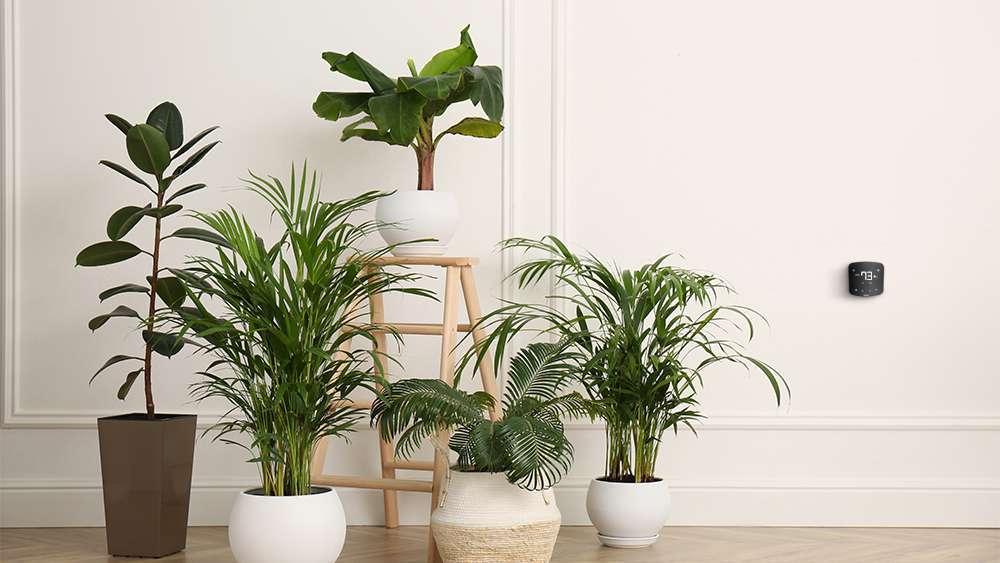
Indoor plants are a fantastic way to enhance your living space, bringing a touch of nature indoors while also significantly improving air quality. Numerous studies have shown that certain plants can effectively remove toxins from the air, making your home healthier and more pleasant. Additionally, these plants can significantly enhance the aesthetic appeal of your interiors, adding color, texture, and life to your decor. In this comprehensive guide, we’ll explore the best plants for both indoor air quality and aesthetics, detailing their benefits, care tips, and how to incorporate them into your home.
1. Spider Plant (Chlorophytum comosum)
The Spider Plant is one of the most popular and resilient houseplants, making it ideal for both beginners and seasoned plant enthusiasts. Its long, arching leaves are not only attractive but also highly effective at purifying the air.
Benefits:
- Air Purification: Removes toxins such as formaldehyde, xylene, and toluene. Learn more about its air-purifying qualities.
- Easy Care: Low maintenance and can thrive in a variety of conditions.
- Propagation: Easily propagates through spiderettes, making it easy to expand your plant collection.
Care Tips:
- Light: Prefers bright, indirect light but can tolerate low light conditions.
- Water: Keep the soil consistently moist but avoid overwatering.
- Temperature: Thrives in temperatures between 55°F and 80°F (13°C to 27°C).
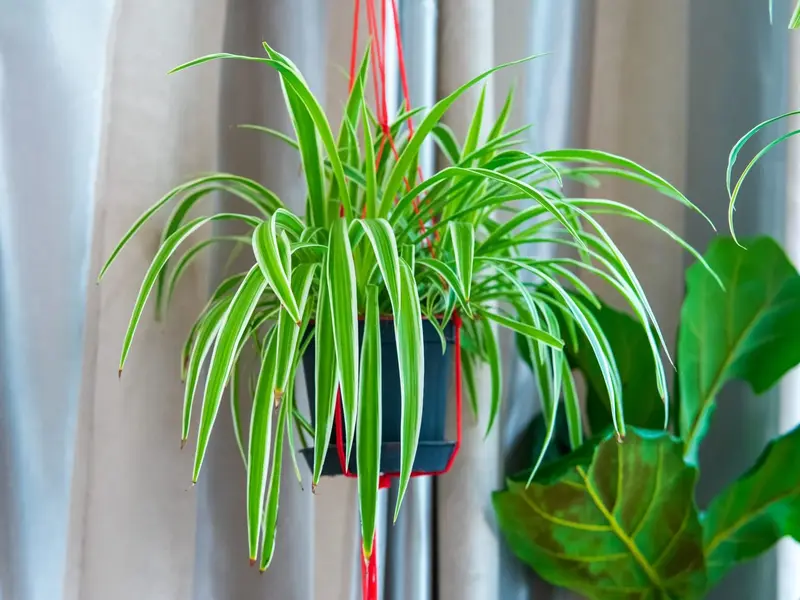
Aesthetic Use:
- Place Spider Plants in hanging baskets or on high shelves to showcase their cascading leaves.
- Use them as a focal point in a plant cluster for added height and texture.
2. Snake Plant (Sansevieria trifasciata)
The Snake Plant, also known as Mother-in-Law’s Tongue, is renowned for its striking, upright leaves and its ability to thrive in low light conditions. It’s also one of the best plants for improving indoor air quality.
Benefits:
- Air Purification: Removes toxins such as formaldehyde, benzene, xylene, and trichloroethylene. Find out more about NASA’s Clean Air Study.
- Low Maintenance: Requires minimal care and can tolerate neglect.
- Oxygen Production: Produces oxygen even at night, making it ideal for bedrooms.
Care Tips:
- Light: Prefers bright, indirect light but can tolerate low light conditions.
- Water: Allow the soil to dry out completely between waterings.
- Temperature: Thrives in temperatures between 60°F and 85°F (16°C to 29°C).
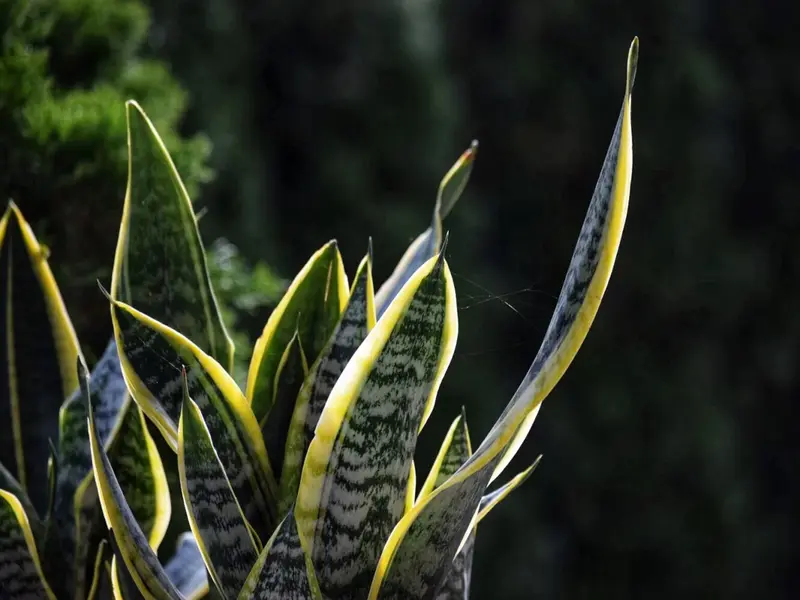
Aesthetic Use:
- Use Snake Plants as statement pieces in modern or minimalist decor.
- Place them in decorative pots to highlight their unique leaf patterns.
3. Peace Lily (Spathiphyllum)
The Peace Lily is a beautiful and elegant plant known for its white spathes and dark green leaves. It’s also highly effective at removing common household toxins from the air.
Benefits:
- Air Purification: Removes toxins such as ammonia, benzene, formaldehyde, and trichloroethylene. Learn more about its benefits at the University of Minnesota.
- Aesthetic Appeal: Adds a touch of elegance with its white flowers and glossy leaves.
- Humidity: Increases humidity levels, which can be beneficial for skin and respiratory health.
Care Tips:
- Light: Prefers low to bright, indirect light.
- Water: Keep the soil consistently moist but avoid overwatering.
- Temperature: Thrives in temperatures between 65°F and 80°F (18°C to 27°C).
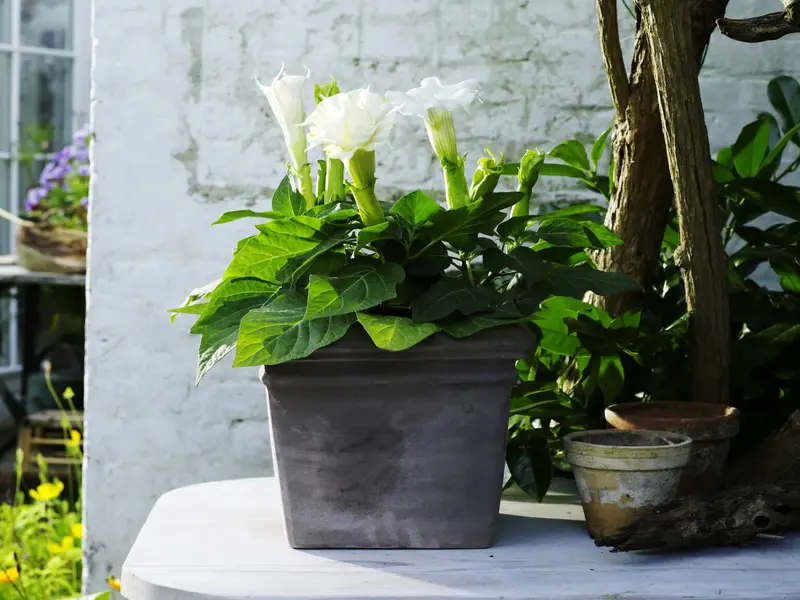
Aesthetic Use:
- Place Peace Lilies in living rooms or entryways to create a welcoming atmosphere.
- Use them as centerpieces on tables or shelves for a touch of elegance.
4. Boston Fern (Nephrolepis exaltata)
The Boston Fern is a lush and feathery plant that adds a touch of natural beauty to any indoor space. It’s also one of the best plants for improving air quality and increasing humidity.
Benefits:
- Air Purification: Removes toxins such as formaldehyde and xylene. Read more about its air-purifying capabilities.
- Humidity: Increases humidity levels, which can be beneficial for indoor air quality.
- Aesthetic Appeal: Adds a lush, tropical feel to any room with its feathery fronds.
Care Tips:
- Light: Prefers bright, indirect light.
- Water: Keep the soil consistently moist and maintain high humidity levels.
- Temperature: Thrives in temperatures between 60°F and 75°F (16°C to 24°C).
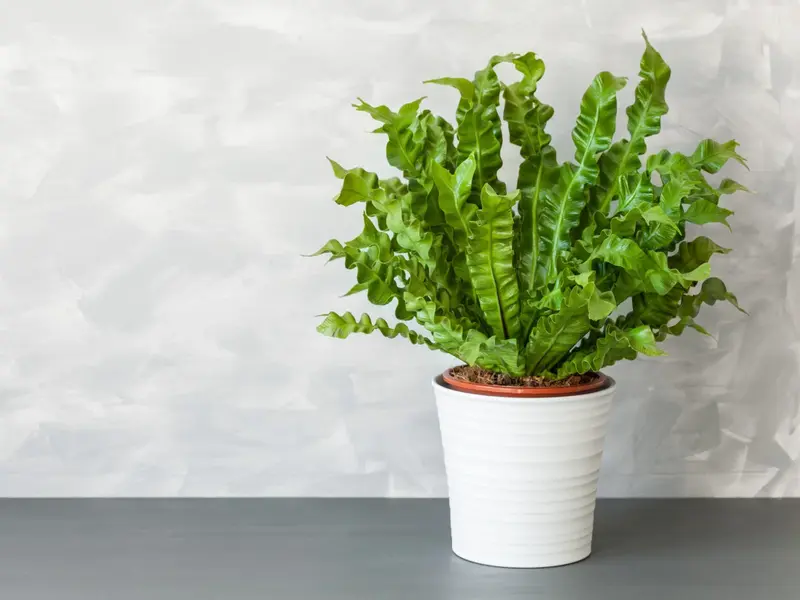
Aesthetic Use:
- Hang Boston Ferns in baskets or place them on plant stands to showcase their cascading fronds.
- Use them to create a lush, tropical atmosphere in bathrooms or sunrooms.
5. Aloe Vera (Aloe barbadensis miller)
Aloe Vera is not only a popular medicinal plant but also an excellent air purifier. Its thick, fleshy leaves are filled with a gel that has numerous health benefits.
Benefits:
- Air Purification: Removes toxins such as formaldehyde and benzene. Discover more from the American Chemical Society.
- Medicinal Uses: The gel inside its leaves has healing properties for burns, cuts, and skin irritations.
- Low Maintenance: Requires minimal care and is drought-tolerant.
Care Tips:
- Light: Prefers bright, indirect light or direct sunlight.
- Water: Allow the soil to dry out completely between waterings.
- Temperature: Thrives in temperatures between 55°F and 80°F (13°C to 27°C).
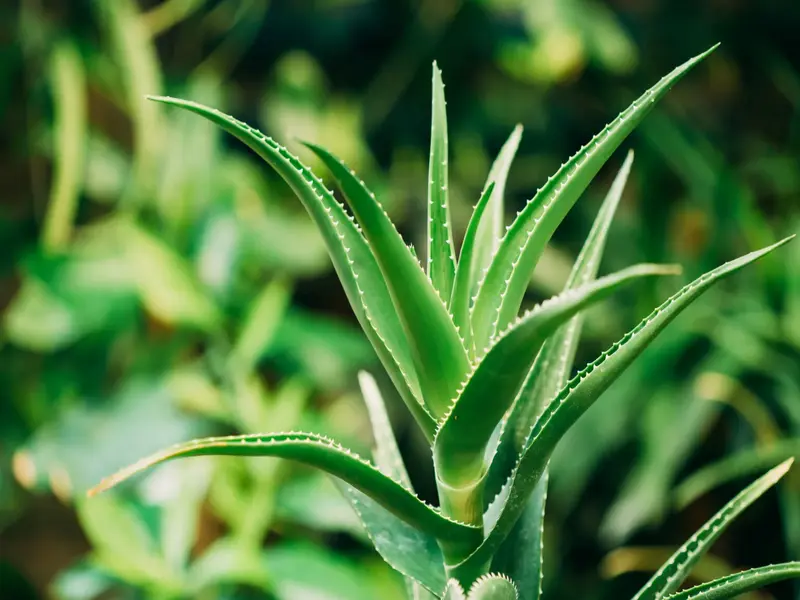
Aesthetic Use:
- Place Aloe Vera plants on windowsills or countertops to add a touch of greenery.
- Use decorative pots to highlight the plant’s unique leaf structure.
6. Rubber Plant (Ficus elastica)
The Rubber Plant is a popular houseplant known for its large, glossy leaves and its ability to purify the air. It’s also relatively easy to care for, making it a great choice for indoor spaces.
Benefits:
- Air Purification: Removes toxins such as formaldehyde. Check out more details on Healthline.
- Aesthetic Appeal: Adds a bold and dramatic touch to any room with its large, glossy leaves.
- Low Maintenance: Requires minimal care and can tolerate low light conditions.
Care Tips:
- Light: Prefers bright, indirect light but can tolerate low light conditions.
- Water: Keep the soil consistently moist but avoid overwatering.
- Temperature: Thrives in temperatures between 60°F and 75°F (16°C to 24°C).
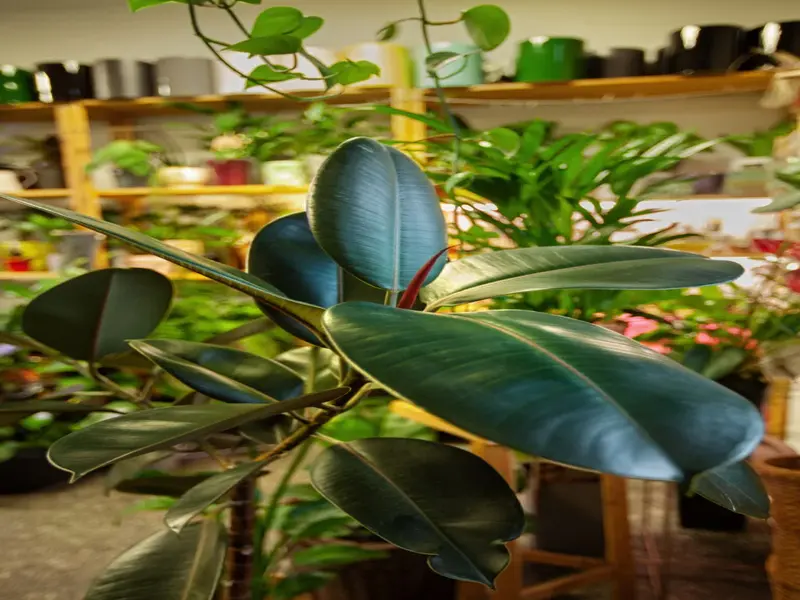
Aesthetic Use:
- Use Rubber Plants as statement pieces in living rooms or offices.
- Place them in stylish pots to complement modern or contemporary decor.
7. English Ivy (Hedera helix)
English Ivy is a versatile and hardy plant that can be used in a variety of indoor settings. Its trailing vines and lush, green leaves make it a popular choice for improving indoor air quality and aesthetics.
Benefits:
- Air Purification: Removes toxins such as formaldehyde, benzene, and mold. Learn more from The Spruce.
- Versatility: Can be grown in hanging baskets, as ground cover, or trained to climb trellises.
- Aesthetic Appeal: Adds a touch of greenery and elegance with its trailing vines and lush leaves.
Care Tips:
- Light: Prefers bright, indirect light but can tolerate low light conditions.
- Water: Keep the soil consistently moist but avoid overwatering.
- Temperature: Thrives in temperatures between 50°F and 70°F (10°C to 21°C).
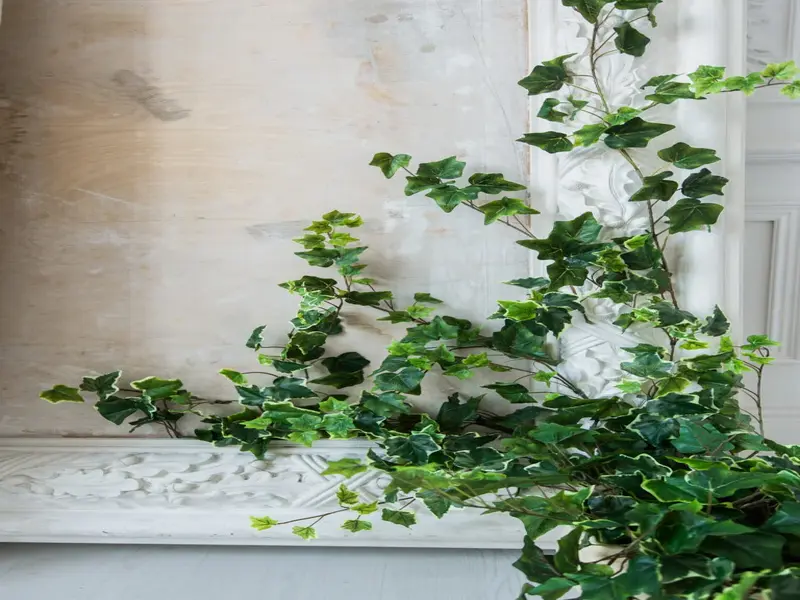
Aesthetic Use:
- Hang English Ivy in baskets or place them on shelves to showcase their trailing vines.
- Use them to create a lush, green backdrop on trellises or plant stands.
8. Areca Palm (Dypsis lutescens)
The Areca Palm, also known as the Butterfly Palm, is a popular indoor plant known for its feathery fronds and air-purifying qualities. It adds a tropical touch to any room and is relatively easy to care for.
Benefits:
- Air Purification: Removes toxins such as formaldehyde, xylene, and toluene. Read more on Gardening Know How.
- Humidity: Increases humidity levels, which can be beneficial for indoor air quality.
- Aesthetic Appeal: Adds a tropical and exotic feel to any room with its feathery fronds.
Care Tips:
- Light: Prefers bright, indirect light.
- Water: Keep the soil consistently moist but avoid overwatering.
- Temperature: Thrives in temperatures between 65°F and 75°F (18°C to 24°C).
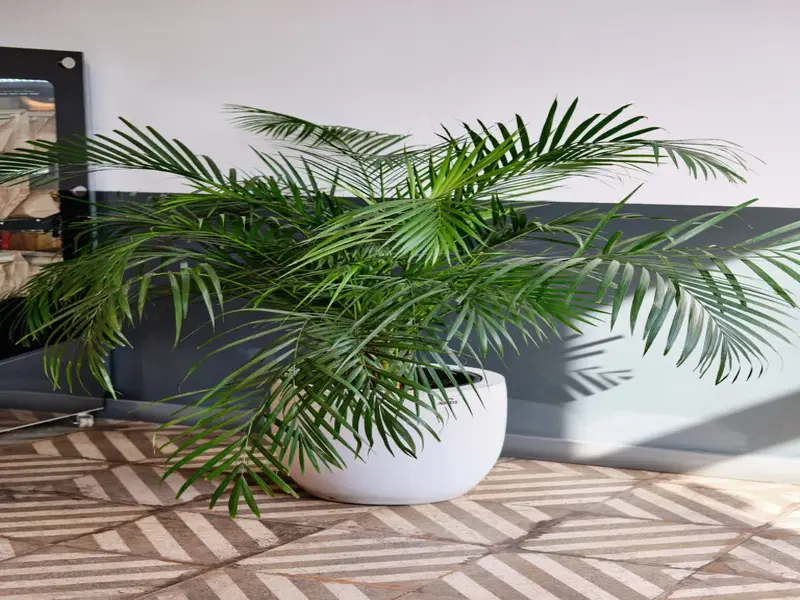
Aesthetic Use:
- Place Areca Palms in living rooms or sunrooms to create a tropical atmosphere.
- Use large, decorative pots to complement the plant’s feathery fronds.
9. Pothos (Epipremnum aureum)
Pothos, also known as Devil’s Ivy, is a resilient and low-maintenance plant that can thrive in a variety of indoor conditions. Its trailing vines and heart-shaped leaves make it a popular choice for enhancing indoor air quality and aesthetics.
Benefits:
- Air Purification: Removes toxins such as formaldehyde, benzene, and xylene. Learn more from Better Homes & Gardens.
- Low Maintenance: Requires minimal care and can tolerate low light conditions.
- Aesthetic Appeal: Adds a touch of greenery with its trailing vines and heart-shaped leaves.
Care Tips:
- Light: Prefers bright, indirect light but can tolerate low light conditions.
- Water: Allow the soil to dry out between waterings.
- Temperature: Thrives in temperatures between 60°F and 80°F (16°C to 27°C).
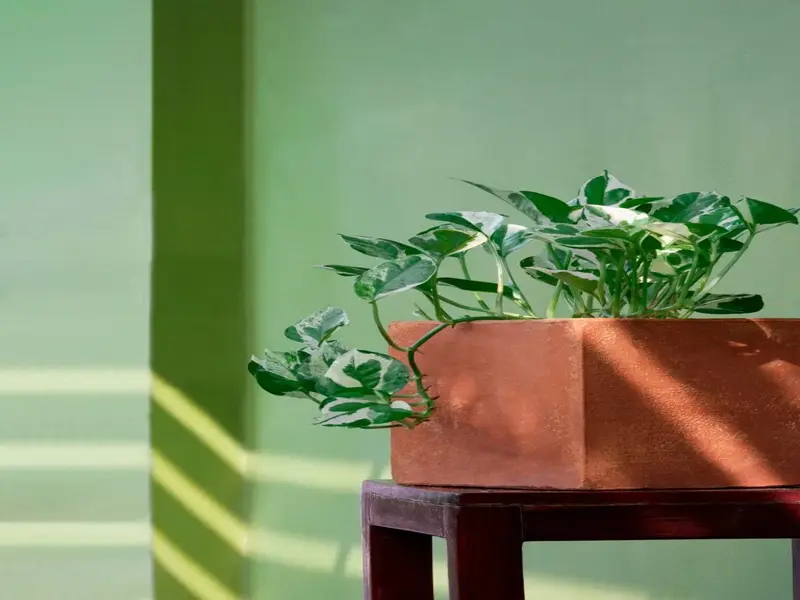
Aesthetic Use:
- Hang Pothos in baskets or place them on high shelves to showcase their trailing vines.
- Use them to add height and texture to plant clusters or arrangements.
10. Gerbera Daisy (Gerbera jamesonii)
Gerbera Daisies are bright and cheerful plants known for their vibrant flowers and air-purifying qualities. They add a splash of color to any indoor space and are relatively easy to care for.
Benefits:
- Air Purification: Removes toxins such as formaldehyde, benzene, and trichloroethylene. Find out more on NCBI.
- Aesthetic Appeal: Adds a pop of color with its vibrant and cheerful flowers.
- Mood Booster: Brightens up any room and can improve mood and well-being.
Care Tips:
- Light: Prefers bright, indirect light or direct sunlight.
- Water: Keep the soil consistently moist but avoid overwatering.
- Temperature: Thrives in temperatures between 65°F and 75°F (18°C to 24°C).
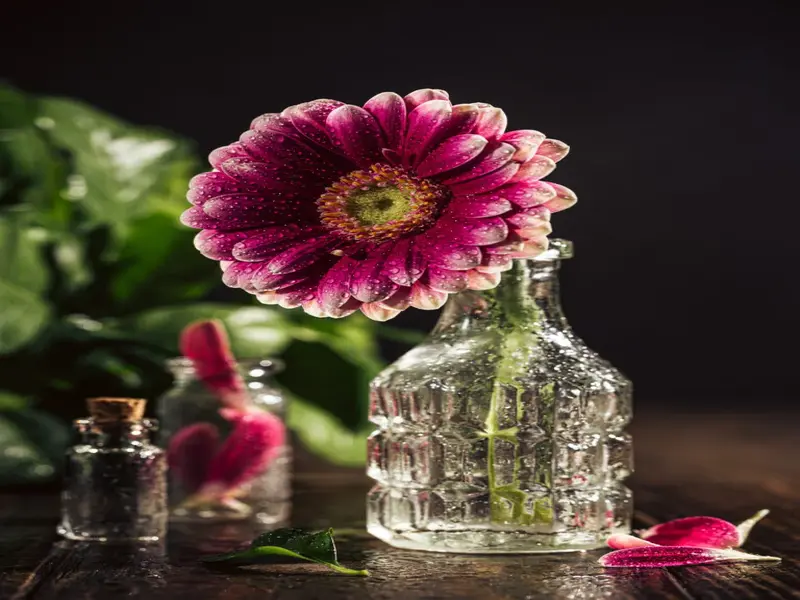
Aesthetic Use:
- Place Gerbera Daisies in colorful pots to match their vibrant flowers.
- Use them as centerpieces on tables or shelves to brighten up any room.
11. Fiddle Leaf Fig (Ficus lyrata)
The Fiddle Leaf Fig is a trendy and popular indoor plant known for its large, violin-shaped leaves. It’s a statement plant that adds drama and elegance to any room while also improving air quality.
Benefits:
- Air Purification: Removes toxins such as formaldehyde. Learn more about its properties on The New York Times.
- Aesthetic Appeal: Adds a bold and dramatic touch with its large, glossy leaves.
- Versatility: Fits well with various decor styles, from modern to traditional.
Care Tips:
- Light: Prefers bright, indirect light.
- Water: Keep the soil consistently moist but avoid overwatering.
- Temperature: Thrives in temperatures between 60°F and 75°F (16°C to 24°C).
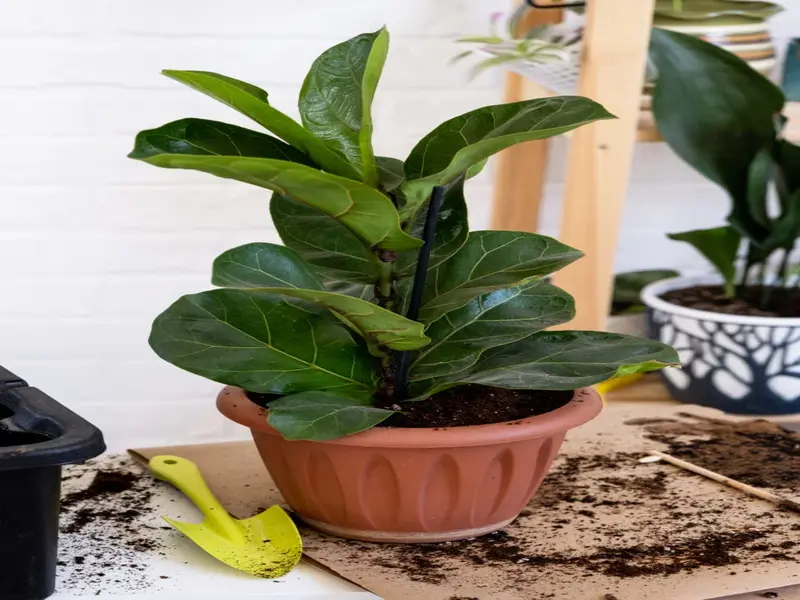
Aesthetic Use:
- Use Fiddle Leaf Figs as statement pieces in living rooms or offices.
- Place them in large, decorative pots to complement their bold leaves.
12. ZZ Plant (Zamioculcas zamiifolia)
The ZZ Plant is a hardy and low-maintenance plant known for its glossy, waxy leaves. It’s highly tolerant of low light and neglect, making it an excellent choice for busy individuals.
Benefits:
- Air Purification: Removes toxins such as xylene, toluene, and benzene. Learn more from The Sill.
- Low Maintenance: Requires minimal care and can tolerate low light conditions.
- Aesthetic Appeal: Adds a touch of greenery with its glossy, waxy leaves.
Care Tips:
- Light: Prefers bright, indirect light but can tolerate low light conditions.
- Water: Allow the soil to dry out completely between waterings.
- Temperature: Thrives in temperatures between 60°F and 75°F (16°C to 24°C).
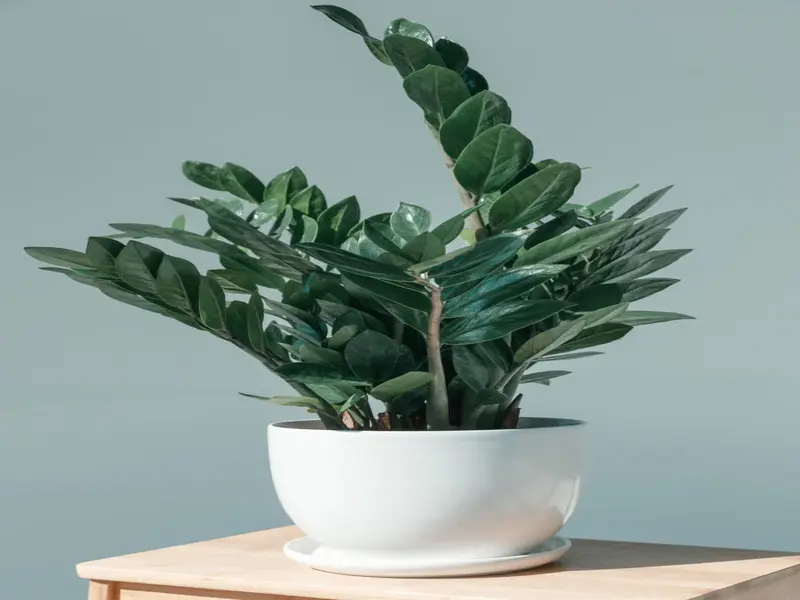
Aesthetic Use:
- Place ZZ Plants in modern or minimalist decor for a sleek and stylish look.
- Use decorative pots to highlight the plant’s glossy leaves.
13. Bamboo Palm (Chamaedorea seifrizii)
The Bamboo Palm, also known as the Reed Palm, is a beautiful and elegant plant known for its air-purifying qualities and tropical appearance. It adds a touch of greenery and tranquility to any indoor space.
Benefits:
- Air Purification: Removes toxins such as formaldehyde, benzene, and trichloroethylene. Check the benefits on EPA.
- Humidity: Increases humidity levels, which can be beneficial for indoor air quality.
- Aesthetic Appeal: Adds a tropical and exotic feel with its feathery fronds.
Care Tips:
- Light: Prefers bright, indirect light.
- Water: Keep the soil consistently moist but avoid overwatering.
- Temperature: Thrives in temperatures between 65°F and 80°F (18°C to 27°C).

Aesthetic Use:
- Place Bamboo Palms in living rooms or bedrooms to create a tropical atmosphere.
- Use large, decorative pots to complement the plant’s feathery fronds.
14. Chrysanthemum (Chrysanthemum morifolium)
Chrysanthemums, also known as Mums, are vibrant and colorful plants known for their air-purifying qualities. They add a splash of color to any indoor space and are relatively easy to care for.
Benefits:
- Air Purification: Removes toxins such as ammonia, benzene, formaldehyde, and xylene. Discover more on Petal Republic.
- Aesthetic Appeal: Adds a pop of color with its vibrant and cheerful flowers.
- Mood Booster: Brightens up any room and can improve mood and well-being.
Care Tips:
- Light: Prefers bright, indirect light or direct sunlight.
- Water: Keep the soil consistently moist but avoid overwatering.
- Temperature: Thrives in temperatures between 65°F and 75°F (18°C to 24°C).
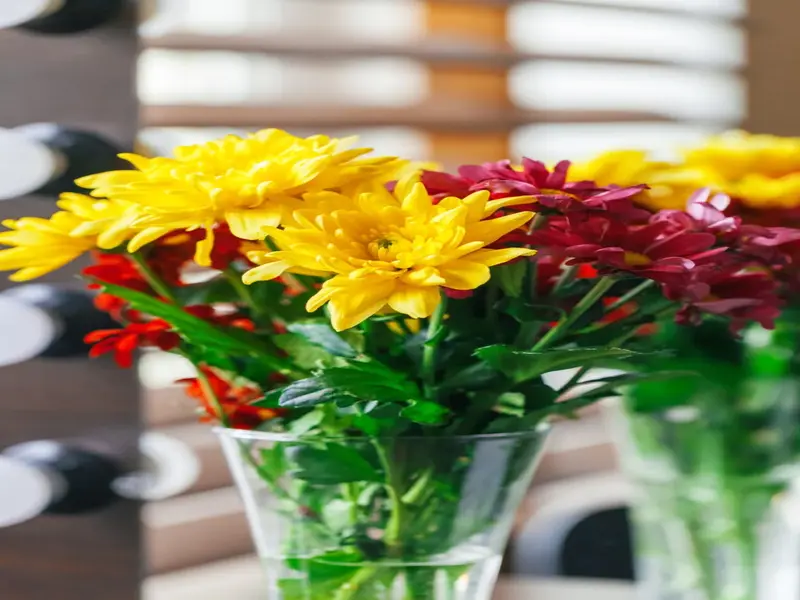
Aesthetic Use:
- Place Chrysanthemums in colorful pots to match their vibrant flowers.
- Use them as centerpieces on tables or shelves to brighten up any room.
15. Dracaena (Dracaena spp.)
Dracaenas are a diverse group of plants known for their air-purifying qualities and attractive foliage. They come in various shapes and sizes, making them versatile and suitable for different indoor settings.
Benefits:
- Air Purification: Removes toxins such as benzene, formaldehyde, trichloroethylene, and xylene. Learn more from Gardener’s Path.
- Aesthetic Appeal: Adds a touch of greenery with its striking and colorful leaves.
- Versatility: Fits well with various decor styles and can be used in different indoor settings.
Care Tips:
- Light: Prefers bright, indirect light but can tolerate low light conditions.
- Water: Keep the soil consistently moist but avoid overwatering.
- Temperature: Thrives in temperatures between 60°F and 75°F (16°C to 24°C).
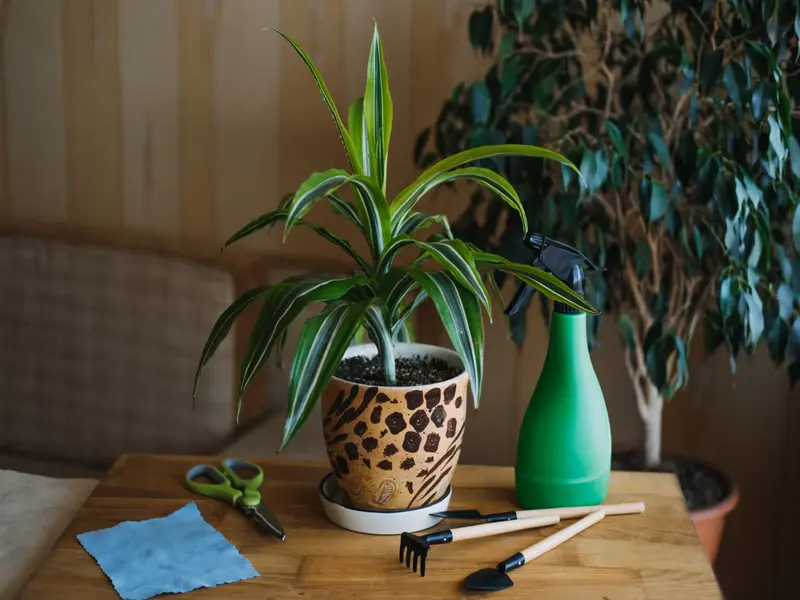
Aesthetic Use:
- Use Dracaenas as statement pieces in living rooms or offices.
- Place them in stylish pots to complement their striking foliage.
Tips for Choosing and Caring for Indoor Plants
Choosing the right indoor plants involves more than just considering their air-purifying qualities and aesthetics. Here are some additional tips to help you select and care for your indoor plants:
1. Assess Your Space
Consider the amount of natural light, temperature, and humidity in your space. Choose plants that will thrive in the conditions you can provide.
2. Start with Low-Maintenance Plants
If you’re new to indoor gardening, start with low-maintenance plants that are easy to care for. This will help you build confidence and experience.
3. Group Plants with Similar Needs
Group plants with similar light and water requirements together. This will make it easier to care for them and ensure they all receive the right conditions.
4. Rotate Your Plants
Rotate your plants periodically to ensure they receive even exposure to light. This will help them grow evenly and prevent them from leaning towards the light source.
5. Monitor for Pests
Regularly inspect your plants for pests such as spider mites, aphids, and mealybugs. Treat infestations promptly to prevent them from spreading to other plants.
Conclusion
Indoor plants are a wonderful addition to any home, offering both aesthetic and health benefits. From improving air quality to adding color and texture, the right plants can transform your living space into a vibrant and inviting sanctuary. By choosing the best plants for indoor air quality and aesthetics and following proper care tips, you can create a beautiful and healthy indoor environment that you and your family will enjoy for years to come. Happy gardening!
